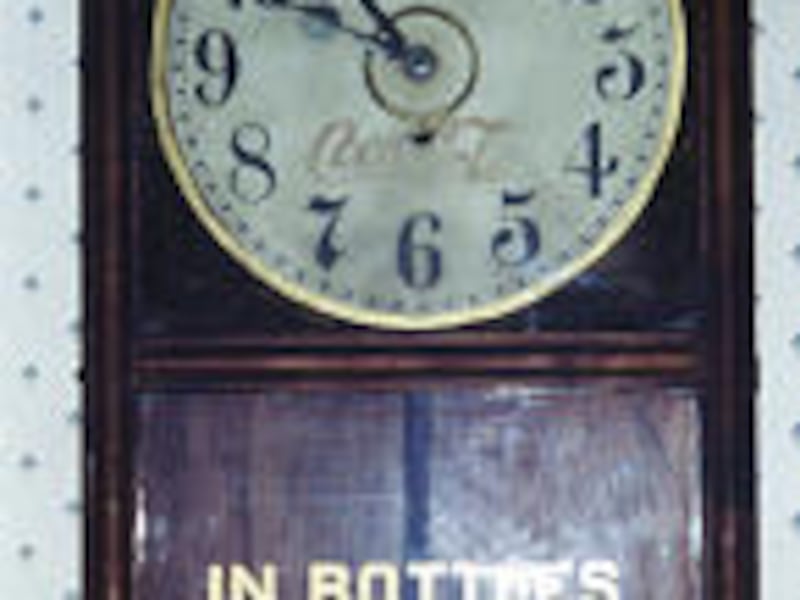Dear Helaine and Joe:Can you tell me the value of this clock? I think it came into the family somewhere around 1919. It does not work. Thank you. —P.A., West Salem, Ill.
Dear P.A.: Many of the clocks that advertise Coca-Cola are highly desired by today's collectors. But in the beginning of the company's promotional history, clocks were thought to be too expensive to be used as an advertising medium on a widespread basis.
Of course, a clock is the perfect place on which to place advertisements because it is just human nature to glance at a clock periodically to see what time it is. Having a Coca-Cola advertisement emblazoned on the front of the time piece creates an almost subliminal message: "Its 3:56 . . . time for a Coca-Cola!"
The first Coca-Cola advertising clocks reportedly were made around 1891 by Edward Baird, who began manufacturing clock cases in Montreal, Canada, in 1888 to hold clock works that had been made by other companies. Baird moved his company to Plattsburg, N.Y., in 1890, and it was there that he began molding papier-mache to make clock cases that featured Coca-Cola advertising.
Baird's Coca-Cola clocks came in two shapes; one was round and is called a "Gallery" clock, and the other was a figure 8 with a large loop on top and a smaller loop below. The early ones of these advertised Coca-Cola as "The Ideal Brain Tonic," while ones that were made a little later just said, "Drink Coca-Cola. Delicious. Refreshing." These Baird clocks were generally made with Seth Thomas works, and they can be very valuable, with prices that can exceed $7,500.
Around 1901, the Coca-Cola Co. began using clocks made by the E.N. Welsh Co. of Forestville, Conn. These were typically in the shape of an octagon school clock and had the advertising on the clock's face with a cardboard print in the bottom compartment behind the pendulum.
In 1903, Ingraham began making clocks with Coca-Cola advertising, and these came in two models — an octagon school house model (similar to the ones made by E.N. Welsh) and a rectangular regulator model. Then, in 1910, the William L. Gilbert Clock Co. of Winsted, Conn., took over, and this is the company that made the clock that belongs to P.A.
This is a circa 1920 rectangular regulator-type wall clock with a "Coca-Cola face," and stenciling on the door that reads, "In Bottles 5c." The "Coca-Cola" face is printed with "Drink Coca-Cola" in red (as it should be) and, although this appears to be faded, it is not as badly degraded as most of these faces generally are.
This is a relatively small problem and most collectors would be reasonably happy with a "Coca-Cola face" in this condition, but there are two other problems that are somewhat more serious. The first is that the fancy gallery that should be at the base of this clock is missing, and the second is that the clock is not working.
In good, original, working condition the insurance replacement value of this clock is between $1,100 and $1,400, but in this state of disrepair, the value of P.A.'s clock is only about half that figure, or perhaps just a bit more. The deduction, however, would be more like 25 percent if the original clock were carefully repaired and made to work properly.
Helaine Fendelman and Joe Rosson are the authors of the "Price It Yourself" (HarperResource, $19.95). Questions can by mailed to them at P.O. Box 12208, Knoxville, TN 37912-0208.

